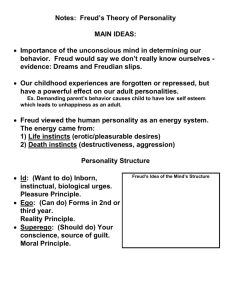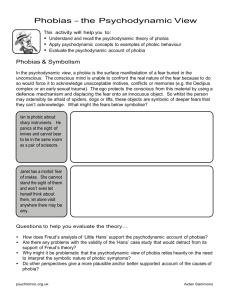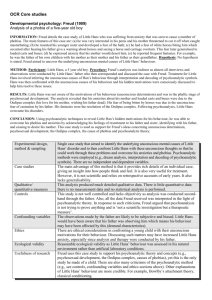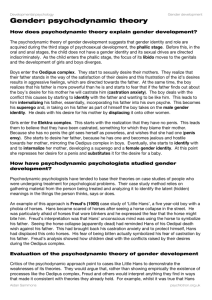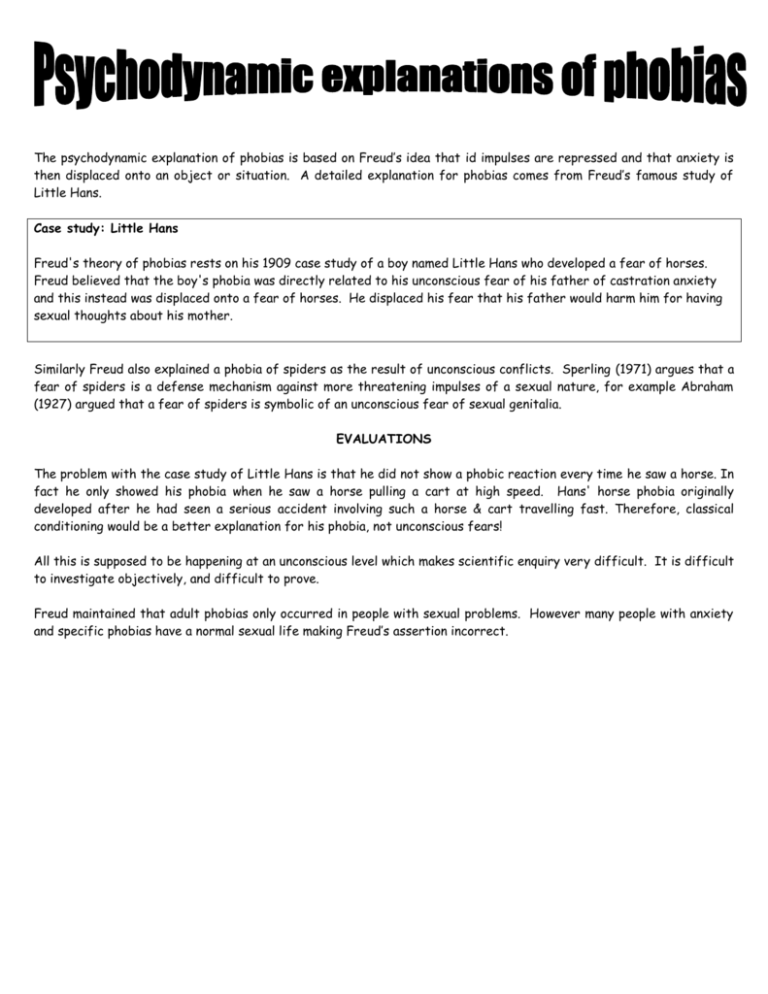
The psychodynamic explanation of phobias is based on Freud’s idea that id impulses are repressed and that anxiety is
then displaced onto an object or situation. A detailed explanation for phobias comes from Freud’s famous study of
Little Hans.
Case study: Little Hans
Freud's theory of phobias rests on his 1909 case study of a boy named Little Hans who developed a fear of horses.
Freud believed that the boy's phobia was directly related to his unconscious fear of his father of castration anxiety
and this instead was displaced onto a fear of horses. He displaced his fear that his father would harm him for having
sexual thoughts about his mother.
Similarly Freud also explained a phobia of spiders as the result of unconscious conflicts. Sperling (1971) argues that a
fear of spiders is a defense mechanism against more threatening impulses of a sexual nature, for example Abraham
(1927) argued that a fear of spiders is symbolic of an unconscious fear of sexual genitalia.
EVALUATIONS
The problem with the case study of Little Hans is that he did not show a phobic reaction every time he saw a horse. In
fact he only showed his phobia when he saw a horse pulling a cart at high speed. Hans' horse phobia originally
developed after he had seen a serious accident involving such a horse & cart travelling fast. Therefore, classical
conditioning would be a better explanation for his phobia, not unconscious fears!
All this is supposed to be happening at an unconscious level which makes scientific enquiry very difficult. It is difficult
to investigate objectively, and difficult to prove.
Freud maintained that adult phobias only occurred in people with sexual problems. However many people with anxiety
and specific phobias have a normal sexual life making Freud’s assertion incorrect.


